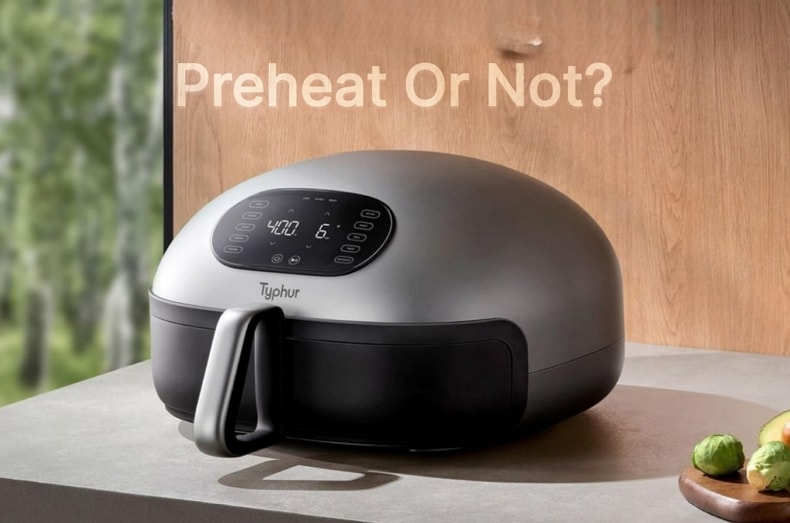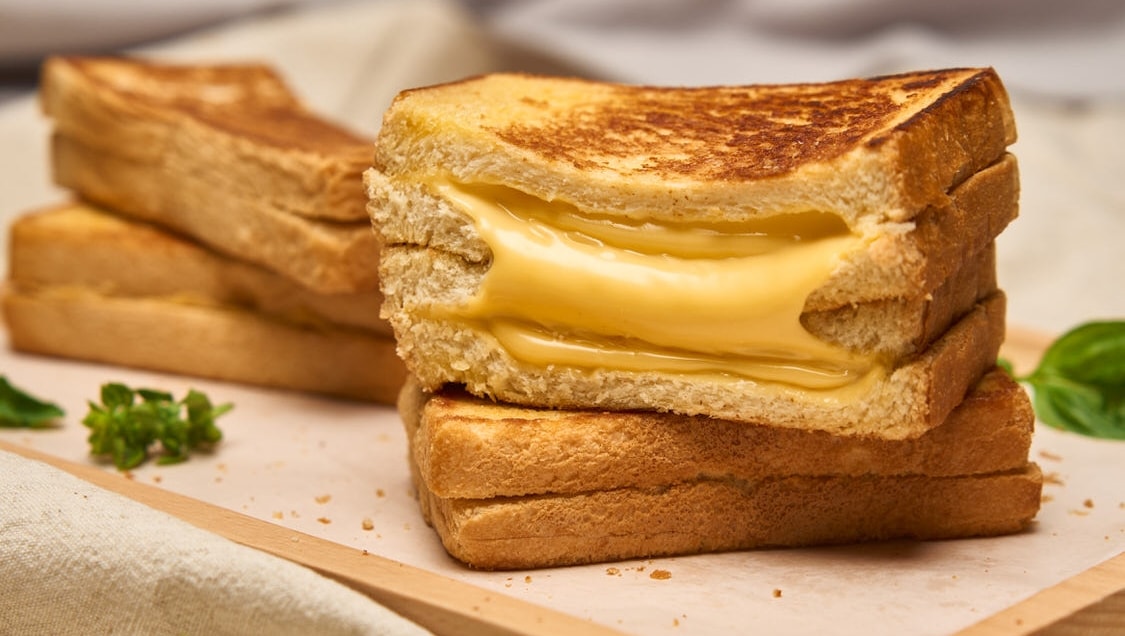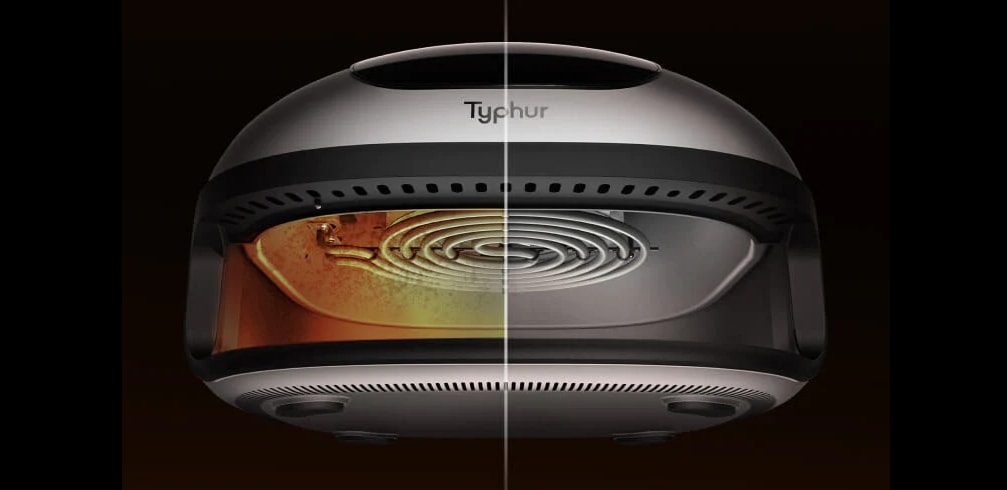
The top area of air fryers has always been a challenging spot to clean. Heating elements and fans make it difficult to access and remove stubborn oil grease build-up. This accumulation over time not only affects the appliance’s performance but also poses potential health hazards.
The Impact of Oil Grease Build-up on Health
Oil grease build-up in the top area of air fryers not only poses health concerns but can also lead to unpleasant odors.
The mechanism behind generating these odors lies in the oxidation process of the residual oil. As the oil is heated and exposed to oxygen, it can become rancid, resulting in the release of volatile compounds that contribute to unpleasant odors [1]. These odorous substances can permeate the air inside the appliance and affect the flavor and aroma of the food being prepared. Prolonged exposure to foul odors can lead to annoyance, discomfort, and potential respiratory issues, particularly for individuals who are more sensitive or have existing respiratory conditions.
Moreover, when oxidized oil droplets contaminate food, they can introduce potentially harmful substances including but not limited to:
- Acrolein (2-propenal) is an unsaturated aldehyde produced when linoleic acid undergoes oxidation. It is classified as a highly toxic chemical and has been associated with various biological impacts such as increased myocardial oxidative stress, cardiomyopathy, and blood vessel dysfunction [2, 3].
- Crotonaldehyde (2-butenal) is an unsaturated aldehyde that has been widely found in many food systems, including fried chips, fish, meat, canola oil, and vegetables [4]. Crotonaldehyde may cause liver damage and hepatic tumors due to the formation of propanodeoxyguanosine adducts in DNA observed in animal models [5]. While some studies have shown harmful effects, the impact on the human body remains uncertain due to the lack of knowledge regarding the daily intake of crotonaldehyde.
- 4‑Hydroxy‑trans‑2‑nonenal and 4‑Hydroxy‑trans‑2‑hexenal are formed through double oxidation of the omega-3 and omega-6 fatty acids. They can bind with proteins, DNA, and phospholipids, potentially leading to cytotoxic effects and thymus necrosis in animals after oral intake [6, 7]. However, the concentrations leading to biological abnormalities are still controversial because no data is available on the daily intake of these compounds.
Typhur Dome’s Self-Cleaning Mode
Typhur Dome’s Self-Cleaning technology is a cutting-edge innovation that utilizes a porous coating that excels at absorbing oil residues and efficiently decomposing them into carbon dioxide and water.
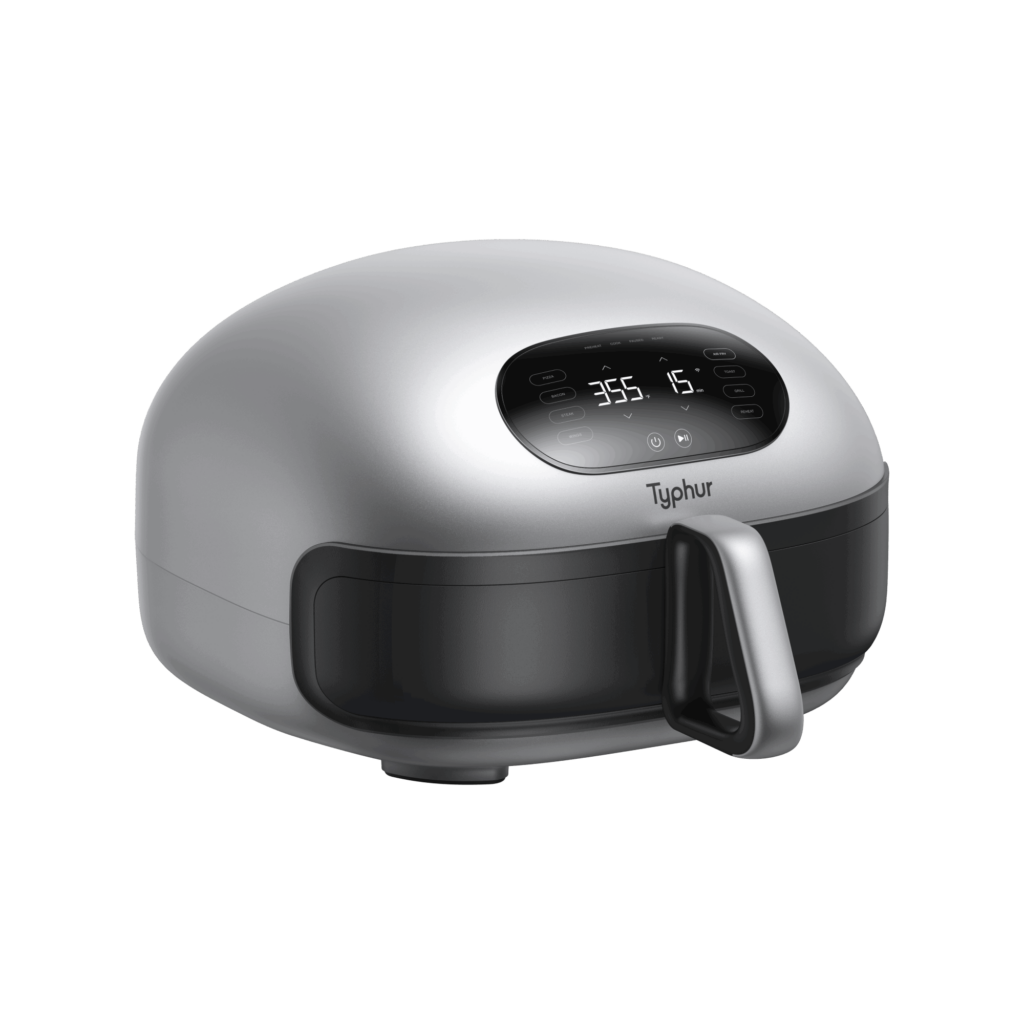
Dual Heating Elements
How does this coating material work?
Our engineers performed extensive laboratory experiments to find the optimal material for exceptional cleaning results. After comparing over 10 different catalytic materials, we finally selected the most outstanding one to be applied in the Typhur Dome Air Fryer. Our laboratory’s picture demonstrates that the material we have chosen efficiently removes oil residue and effectively inhibits oxidation.
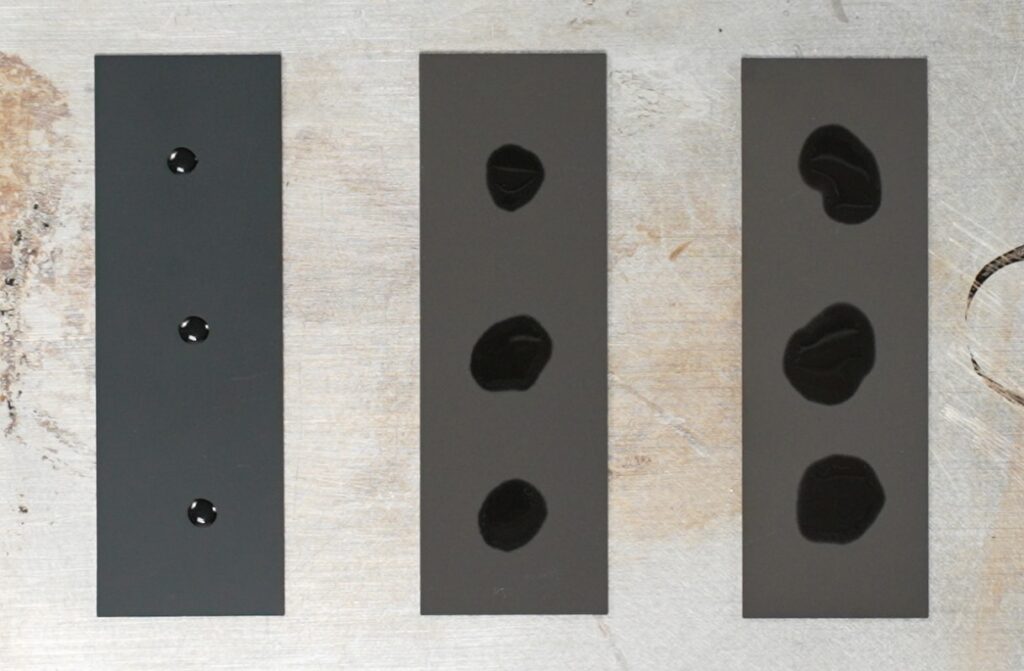
Self-cleaning coating (before heating)

Self-cleaning coating (after heating)
How to use Typhur Dome’s Self-cleaning mode?
The self-cleaning function is recommended to operate after several cooks to maintain cleanliness and hygiene.
- Before starting the cleaning process, ensure there is no food remaining in the basket.
- Choose the ‘Clean’ mode for a regular cleaning cycle, which usually completes in about 60 minutes. For more intensive cleaning, opt for the ‘Deep Clean’ mode which typically requires around 120 minutes to complete.
Let’s see the difference between Typhur Dome and another brand lacking a self-cleaning function. As evident, another product accumulates a substantial amount of oil on the top, while our Typhur Dome, with its self-cleaning capability, almost no oil residue can be seen within the cavity. This comparison underscores the Typhur Dome air fryer’s powerful and excellent cleaning ability, which sets it apart as a superior choice.
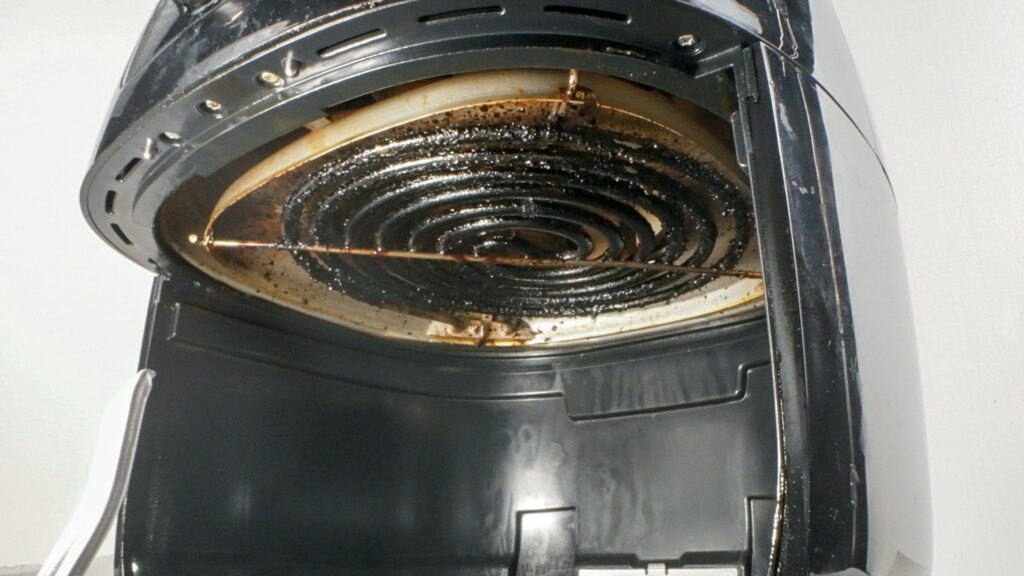
Other air fryer brands top area
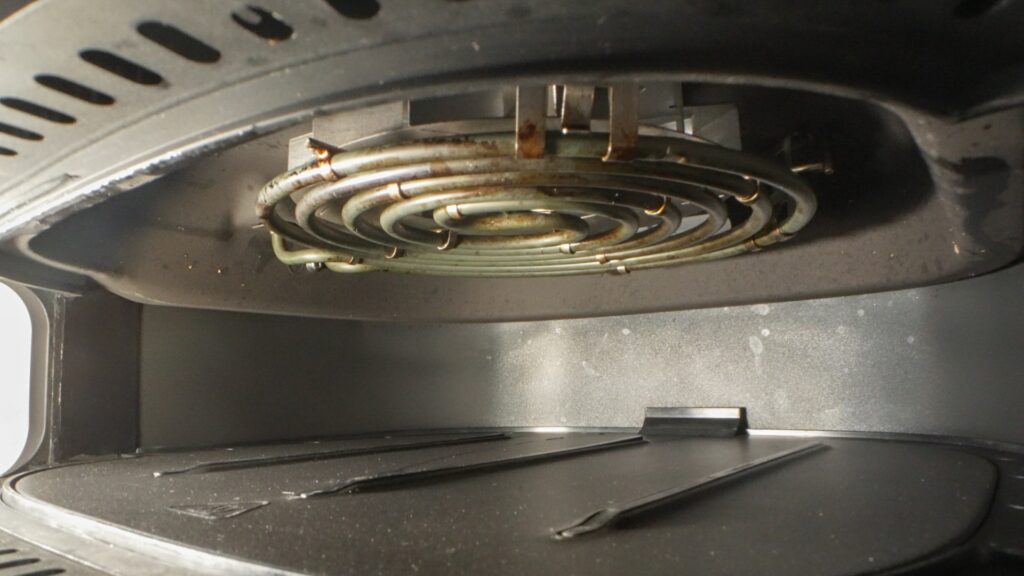
Typhur Dome air fryer top area
The Typhur Dome air fryer with self-cleaning modes addresses the common health and hygiene concerns associated with oil grease build-up in other air fryers. This technology significantly reduces the risk of potential health hazards caused by the oxidation of residual oils.
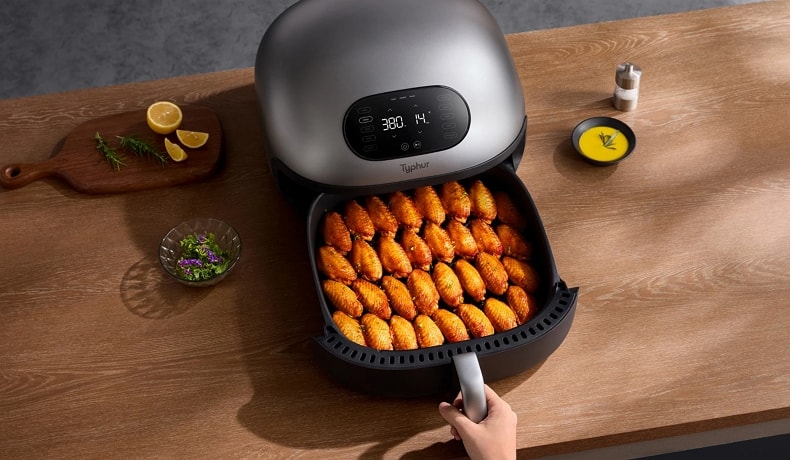
Reference
[1] Laguerre, M., Bily, A., & Birtić, S. (2020). Lipid oxidation in food. In Lipids and edible oils (pp. 243-287). Academic Press.
[2] AfTSaDR — Agency for Toxic Substances and Disease Registry, Toxicological profile for acrolein (August, 2007).
[3] Ismahil, M. A., Hamid, T., Haberzettl, P., Gu, Y., Chandrasekar, B., Srivastava, S., … & Prabhu, S. D. (2011). Chronic oral exposure to the aldehyde pollutant acrolein induces dilated cardiomyopathy. American Journal of Physiology-Heart and Circulatory Physiology, 301(5), H2050-H2060.
[4] Earley, J. H., Bourne, R. A., Watson, M. J., & Poliakoff, M. (2015). Continuous catalytic upgrading of ethanol to n-butanol and> C 4 products over Cu/CeO 2 catalysts in supercritical CO 2. Green Chemistry, 17(5), 3018-3025.
[5] Chung, F. L., Tanaka, T., & Hecht, S. S. (1986). Induction of liver tumors in F344 rats by crotonaldehyde. Cancer Research, 46(3), 1285-1289.
[6] Long, E. K., & Picklo Sr, M. J. (2010). Trans-4-hydroxy-2-hexenal, a product of n-3 fatty acid peroxidation: Make some room HNE…. Free Radical Biology and Medicine, 49(1), 1-8.
[7] Oarada, M., Miyazawa, T., Fujimoto, K., Ito, E., Terao, K., & Kaneda, T. (1988). Degeneration of lymphoid tissues in mice with the oral intake of low molecular weight compounds formed during oil autoxidation. Agricultural and biological chemistry, 52(8), 2101-2102.


